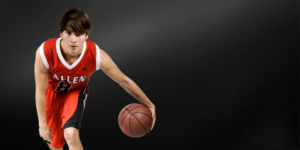American football is a highly exhausting sport featuring extreme action and perils throughout the play. The out-bursting force required to pull the oval ball out from the defense makes players prone to inevitable injuries and bruises, sometimes as serious as organ damage, broken bones, and months of bed rest. Club or professional football virtually isn’t the child’s play. To reduce these risks, various protective gear is recommended by the World American Football pad Association to safeguard players from serious injuries that might result during the game.
For novices, wearing the football pads might be a tricky task. If not put on properly, players are exposed to irreversible wounds given the intensity and rules of the game. For newcomers, it is important to follow the stepwise procedures on how to put on football pads properly. Let’s start with the easiest one i.e., shoulder pads:
How to Properly Put on Shoulder Pads?
The shoulder pads are the easiest to put on. There are a couple of straps on the backside of the pads with buckles on the front to fit the gear accordingly with chest size. When wearing shoulder pads, the side with straps must be put on the back to make sure you have straps and buckles aligned correctly. Now when the shoulder pads are put on, it’s time to tighten them up. Locate the straps from the backside and attach them with the clips (or buckles) located on the front side until they perfectly fit with the body. Make sure to fasten the belts skin-tight to make sure they do not loosen up during the game. If you didn’t, they will obstruct movements and compromise players’ safety on the football ground, therefore a full-fitting step is a must-do task. Additionally, a perfectly fitting shoulder strap integrates with the players’ torso and adequately protects them from shoulder and frontal injuries.
How to Put on the Helmet?
Helmets are essential components of football gears and are must-have safety accessories before going out on the field. First of all, ensure you have purchased a suitable fitting helmet for the head size. When putting it on, hook it as tight as it could get. Before wearing the helmet, loosen up the strap from the buckles, wear the helmet, and then adjust the headspace and chin area accordingly to head size. Also, make sure to place the chin pad directly under the prescribed area and tighten it with the strap and fasten them with the front buckle until they fit perfectly well. Now you’re good to go for the lower body pads.
Wearing the Foot Pads
Leg pads have varieties of sizes and fittings depending on the athlete’s physique. The various leg pads in the American football uniforms include hip pads, thigh pads, butt pads, knee pads, and sometimes the tailbone pads (mostly pre-installed). Make sure to wear these leg pads with tight underpants or purpose-built football girdles. If you want to let the pads fit more easily into pre-defined slots, try the girdle. Turn your shorts inside-out and carefully place the pads sequentially. Start with the knee pads, then the thighs, and hips, and finally slide the butt pads, or choose the combination yourselves. Note that the rounded side of the pad must be placed on the bottom end and the flat side on top. When everything’s done, make certain that the body curvature doesn’t click when you move around wearing these pads.
More Protective Paddings
The plastic cup is also considered the most critical safety gear in football. The cup includes jockstraps which are tightened around the lower body and are extremely important when going for a game. The other protective equipment is arm pads which are generally for linemen, and collar pads or neck rolls that are counted options.





